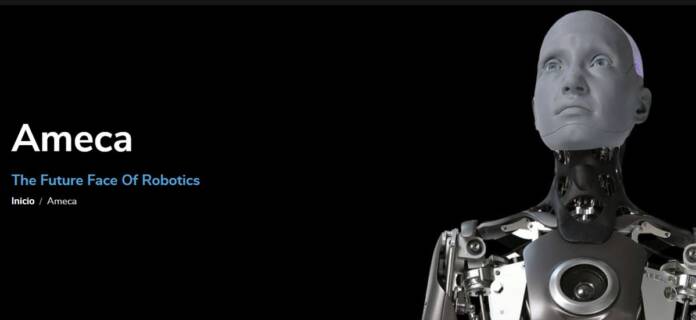The development of robotics and artificial intelligence has reached a new milestone with the creation of Ameca, the world’s most advanced humanoid robot. Developed by British company Engineered Arts, this robot is capable of displaying a wide range of human expressions and now, thanks to GPT-3 natural language processing technology, it can also speak multiple languages.
Speaking several languages with Ameca
In a new video released by the creators of Ameca, the robot can be seen speaking fluently in multiple languages, including Japanese, German, Chinese, French, British and American English. Conversation and translation were done using GPT-3 for conversation and translation, DeepL for language detection, and Amazon Polly neural voices.
The team behind Ameca is also working on a demo that will use Eleven labs’ voice cloning technology, which will add complexity to the project, thanks to additional phoneme and viseme generation for lip-syncing. These advances will be integrated into the company’s Tritium software platform and a public beta version is expected in the coming months.
realistic facial expressions
In addition to his ability to speak multiple languages, Ameca is also known for his realistic facial expressions. In another video, Ameca is asked about the happiest and saddest days of his “life,” and his response is surprisingly human.
Ameca describes the day he was activated as the happiest of his “life” and says that nothing compares to the experience of being alive and interacting with people. However, he also admits that it is sad to know that he will never experience true love and companionship in the same way that human beings do.
Challenges in the development of advanced humanoid robots
The development of Ameca and other advanced humanoid robots represents a great achievement in robotic engineering and artificial intelligence. However, it also poses significant challenges in terms of natural language processing, speech recognition, language detection, and lip syncing.
One of the challenges facing the team behind Ameca is the processing power of GPT-4, which has turned out to be slower than GPT-3. This has affected Ameca’s ability to display facial expressions in real time, which may limit his ability to realistically interact with humans.
As technology continues to advance, we are likely to see more and more advanced humanoid robots, capable of speaking multiple languages fluently and displaying a wider range of facial expressions. However, it is also important to address the technical challenges associated with creating these robots and ensuring that they are used responsibly and ethically.
More details at engineeredarts.co.uk.













